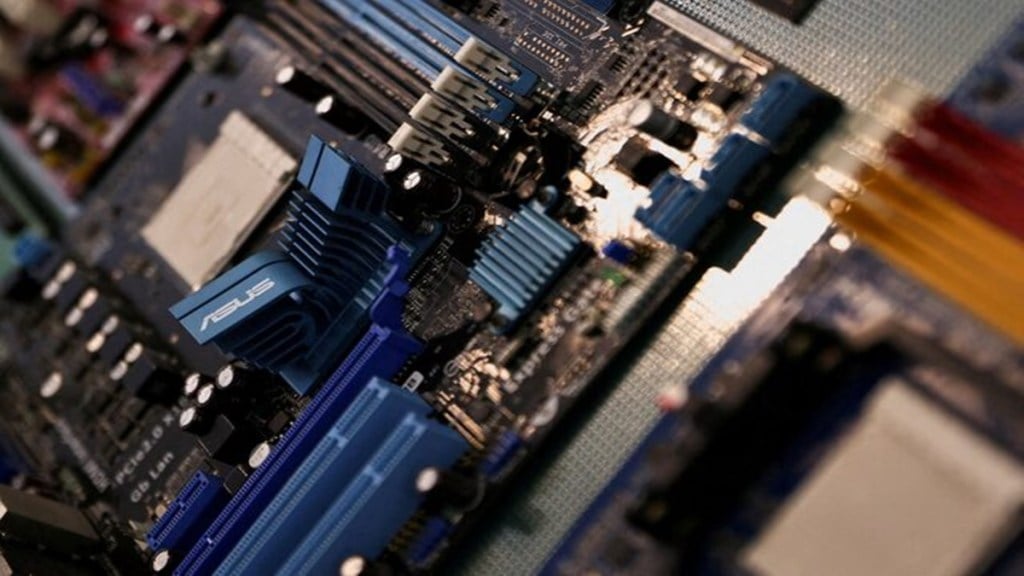With a reciprocal tariff rate of 27% imposed by the United States starting April 9, India stands in a favourable position compared to competitors like Vietnam (46%), Thailand (36%), and China (54% – 34% reciprocal plus additional 20% ). However, it will face challenges from manufacturing nations such as Turkey, Brazil, and the Philippines, with duties of 10%, 10%, and 17%, respectively.
Analysts said that India’s long-term success hinges on securing a robust bilateral trade agreement (BTA) with the US as other countries are also expected to open lines for similar pacts.
In the electronics and smartphone sectors, India’s edge is clear. Vietnam and Thailand, key manufacturing hubs for global giants like Samsung and Apple, face steep tariffs that erode their cost competitiveness. India’s 27% tariff, coupled with the production-linked incentive (PLI) scheme, positions it as an attractive alternative.
According to India Cellular and Electronics Association (ICEA), India has fared well in the initial round of tariff adjustments, emerging favourably, especially when compared to key electronics export competitors such as China, Vietnam, Thailand, and Indonesia, owing to the relentless efforts of our negotiators and leaders.
“The true long-term inflection point for India’s electronics trade with the US will rest on the successful conclusion of a bilateral trade agreement (BTA),” Pankaj Mohindroo, ICEA chairman said.
According to Mohindroo, BTA must now become the cornerstone of our trade strategy, to help unlock stable market access, tariff predictability, and a framework for scaling high-value electronics exports.
“As we await possible retaliatory moves from other major economies, our deepest focus must remain on converting this strategic opening into sustained export growth and supply chain integration,” Mohindroo said.
According to MAIT, the industry body representing the electronics and ICT hardware sector, India’s $7 billion smartphone exports to the US may face some pressure due to evolving trade policies, but the real advantage lies in the comparative tariffs imposed on competing economies like China (54%) and Vietnam (36%). “While US trade barriers could theoretically dampen India’s export volumes, the higher reciprocal tariffs on China and Vietnam create a relative advantage for Indian manufacturers. This discrepancy tilts the scales in India’s favour, making its exports comparatively more appealing,” It said in its analysis.
Dixon Technologies managing director Atul Lall said that India has a competitive advantage over China and Vietnam following the US’s rollout of reciprocal tariffs.
“I was very skeptical about how Vietnam, Thailand and others would be treated, but in comparison, we, as a country, are in a better position. It looks positive for us,” Lall said.
According to Ashok Chandak, president of India Electronics and Semiconductor Association (IESA) the tariffs may impact India’s booming exports, but India could remain competitive as China, Vietnam, Taiwan and Thailand face even higher tariffs. “India’s low electronics imports from the US provide room for tariff adjustments to maintain trade balance,” he added.
Analysts like Counterpoint’s Tarun Pathak see a mixed outlook. According to him, while India benefits from lower tariffs, global supply chain complexities and Asia’s dominance in smartphone production limit US manufacturing shifts. “American consumers will bear the brunt of higher costs,” Pathak said, giving India a window to scale up.
In semiconductors, India’s opportunity is more nuanced. While Taiwan, with a 32% tariff, dominates high-end chip production, India could carve a niche in lower-end manufacturing, packaging, and testing. The absence of US tariffs on semiconductors globally levels the playing field, but India’s lower overall tariff burden on related goods (27% vs Taiwan’s 32%) offers a subtle edge.
However, challenges from Turkey, Brazil, and the Philippines complicate the picture. These nations, with duties significantly lower than India’s 27%, are also vying for a slice of the global manufacturing pie. Brazil’s 10% tariff, for instance, could lure companies like Apple, which is expanding iPhone assembly there. According to some analysts, Apple, a major driver of India’s $10 billion electronics exports to the US, might face margin pressures or price hikes for its iPhone 17 series due to India’s tariffs, potentially shifting some production to Brazil.
Industry body ICEA has already urged the government to extend zero-duty benefits for smartphones and other electronics, projecting an 800% export surge to $80 billion by 2030. Without such concessions, India’s 16.5% customs duty on US imports could erode its cost advantage if reciprocal duties rise, it has said.

